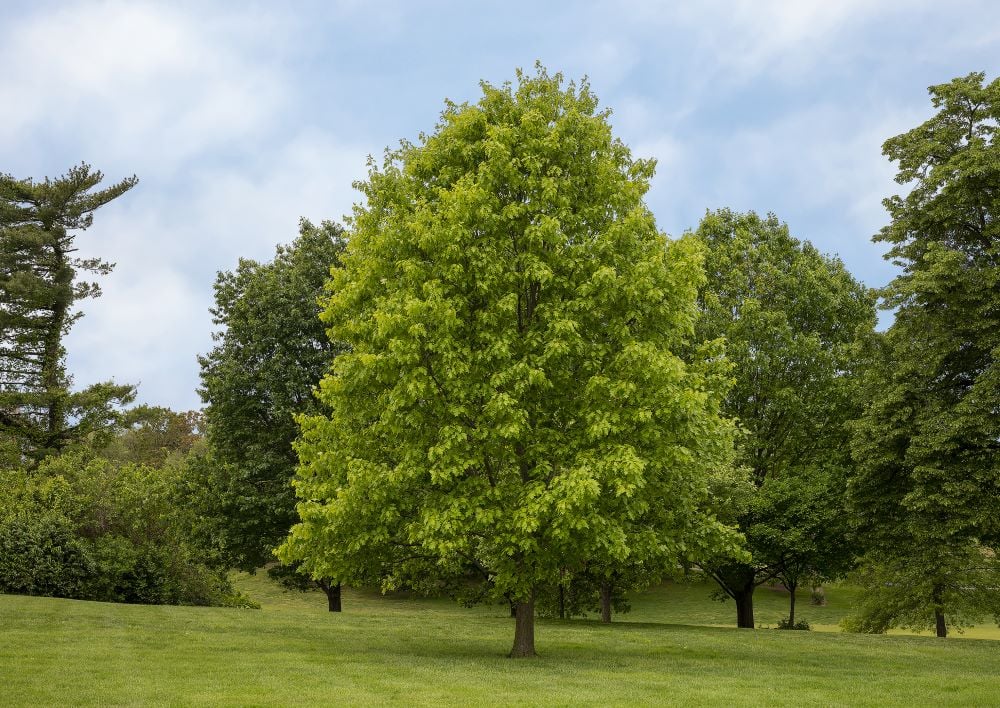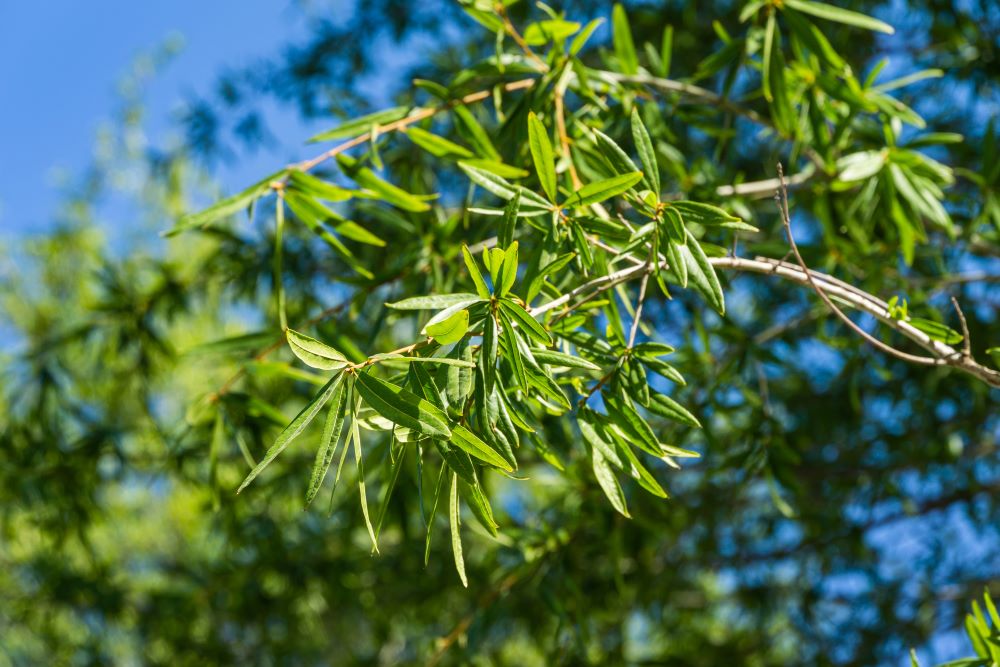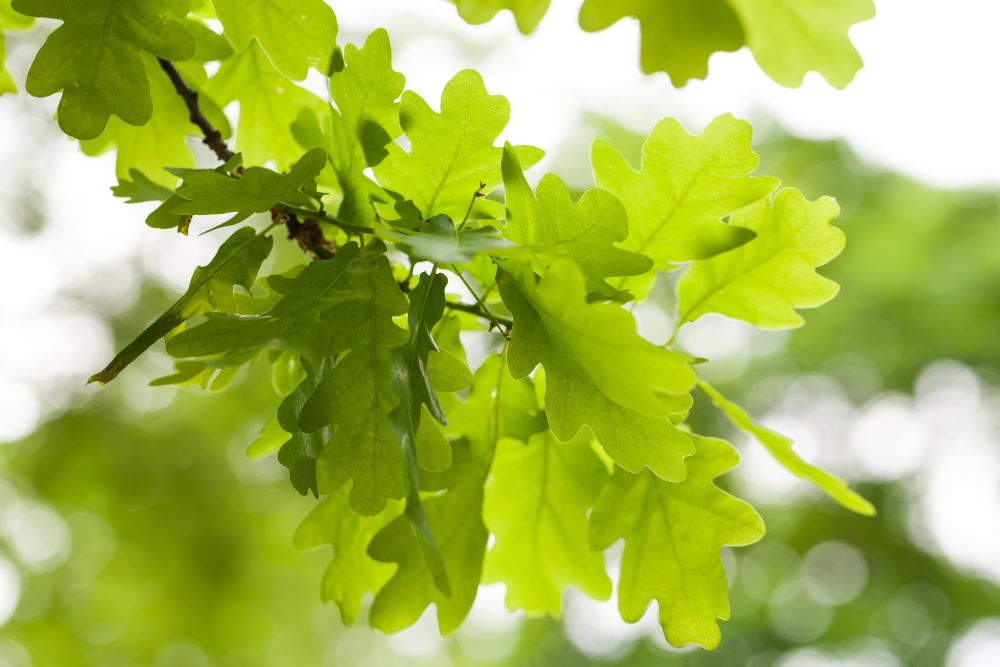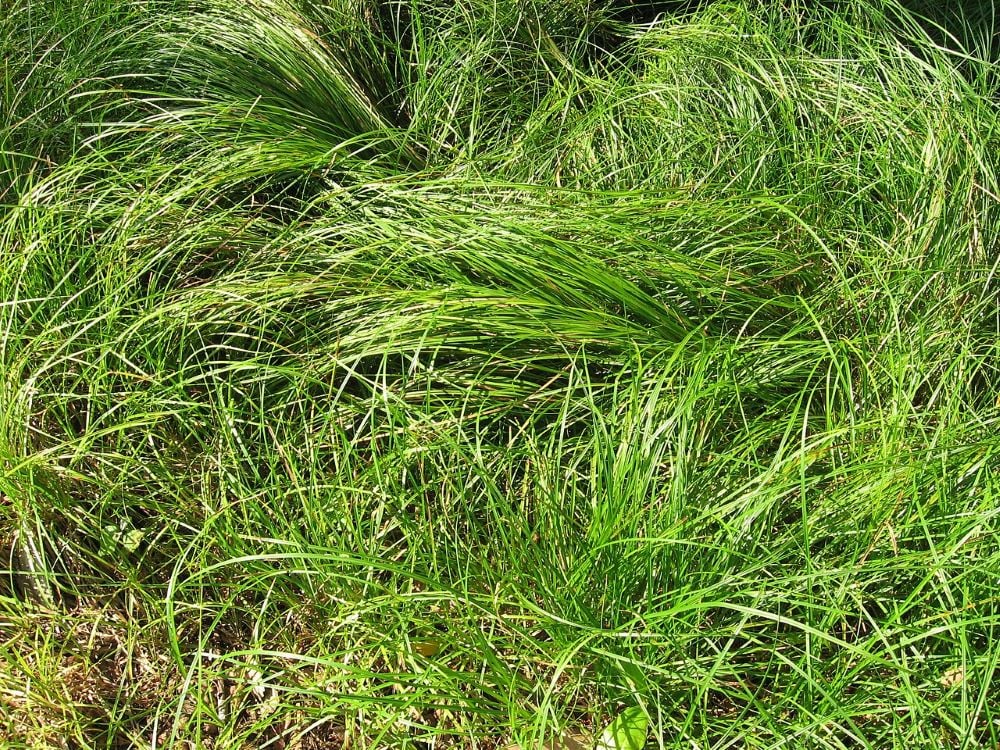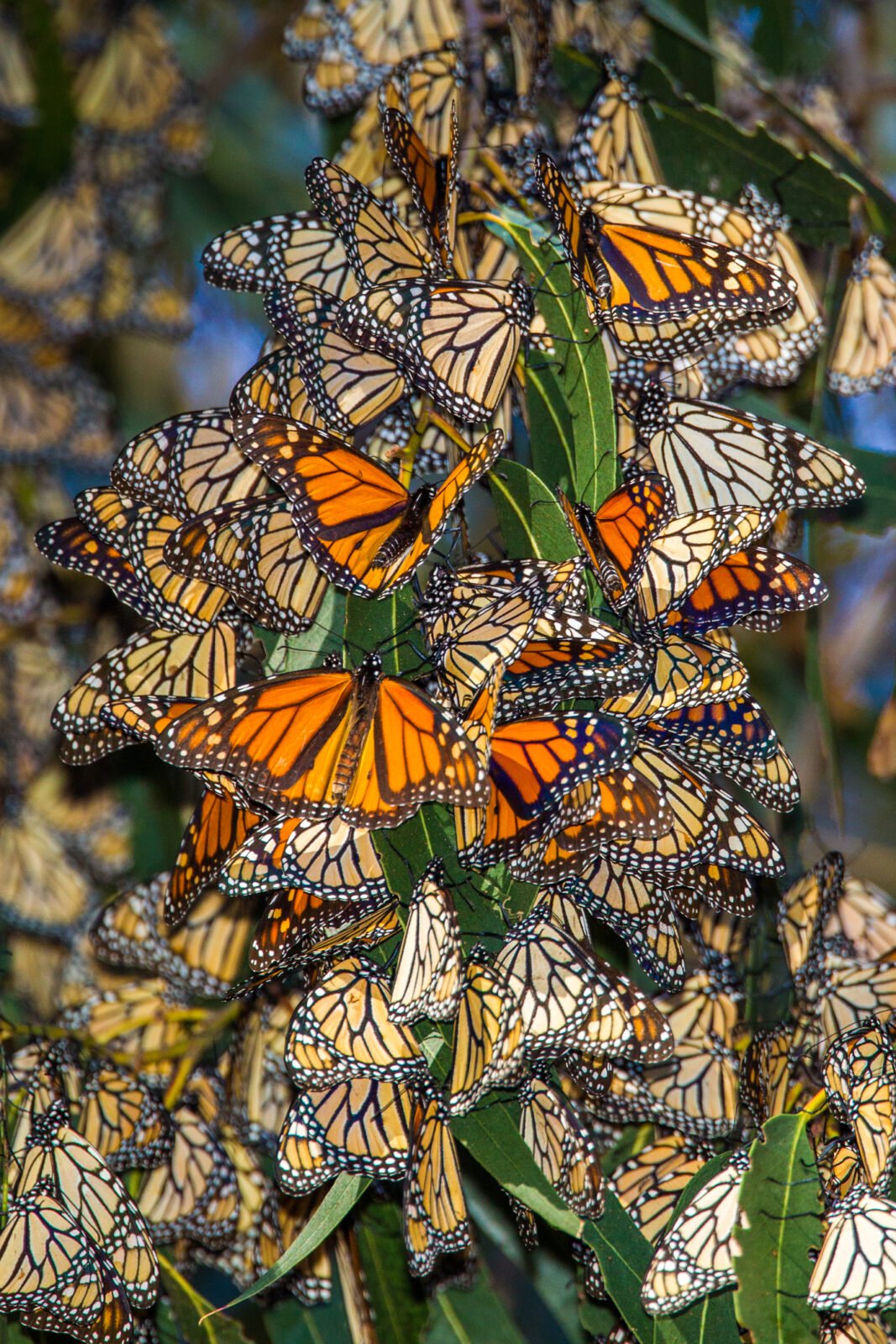Black Oak
Quercus velutina
Black Oak (Quercus velutina) is a large deciduous tree with leaves that are deeply to shallowly lobed with fine hairs on the buds and undersides. They turn yellow-brown to dull red in winter. Male catkins and female spikes appear in spring and are wind pollinated. Acorns are reliably produced every 2-3 years and are eaten by woodpeckers, blue jays, wild turkeys and small mammals. Black Oak offers cover/habitat as well as nesting sites for a wild variety of native wildlife.
View Details
Northern Red Oak
Quercus rubra
Keystone Value: The genus Quercus (Oak) supports over 500 species of butterfly and moth caterpillars, providing food for a variety…
View Details
Oakleaf Hydrangea
Hydrangea quercifolia
Oakleaf Hydrangea (Hydrangea quercifolia) is a large shrub that can grow 6′ to 8′ tall with a comparable spread. It…
View Details
Willow Oak
Quercus phellos
Keystone Value: The genus Quercus (Oak) supports over 500 species of butterfly and moth caterpillars, providing food for a variety…
View Details
Pin Oak
Quercus palustris
Keystone Value: The genus Quercus (Oak) supports over 500 species of butterfly and moth caterpillars, providing food for a variety…
View Details
Swamp White Oak
Quercus bicolor
Keystone Value: The genus Quercus (Oak) supports over 500 species of butterfly and moth caterpillars, providing food for a variety…
View Details
Powerhouse Keystone Species – Plant an Oak
April 8, 2021
What are Keystone Species? As earth stewards of our amazing planet, we can appreciate the potential importance of all species…
Read More
White Oak
Quercus alba
Keystone Value: The genus Quercus (Oak) supports over 500 species of butterfly and moth caterpillars, providing food for a variety…
View Details
Pennsylvania Sedge
Carex pensylvanica
Pennsylvania sedge (Carex pensylvanica) is a shade-loving perennial sedge commonly found in thickets and dry woodland areas. It is typically found in clumps up to 8″ tall and grows in loose colonies. This is a low sedge with soft, delicate, semi-evergreen leaves. It is semi-evergreen in moderately cold winter climates. Flowers bloom in late spring in bunches atop triangular stems which rise up from the foliage. It makes an excellent, soft, low maintenance ground cover for dry shade.
View Details
Eastern Red Cedar
Juniperus virginiana
Eastern Red Cedar (Juniperus virginiana) is a large evergreen tree that grows naturally in prairies, oak barrens, old pastures, limestone hills, and along highways. The juniper berries produced by female trees are an important winter food source for birds and small mammals, and the cones on male trees produce a large amount of pollen that attracts butterflies, moths, and other pollinators.
View Details
Native News Recap: 2022
December 27, 2022
Here’s a native news recap looking back at some of the biggest native plant news stories of the year. A…
Read More
Sweet Birch
Betula lenta
Keystone Value: The genus Betula (Birch) supports over 400 species of butterfly and moth caterpillars, providing food for a variety…
View Details

